 By Staff By Staff
September 2, 2020
BURLINGTON, ON
 Closes for the season on Tuesday, Sept. 8, 2020. LaSalle Pool and Mountainside Pool will close until next spring as of Tuesday, Sept. 8, 2020.
Weather permitting, Nelson Outdoor Pool will remain open until Oct. 11 and spray pads will remain open until Oct. 12, 2020.
Angela Coughlan Pool’s renovation is nearly complete. An announcement on its re-opening and program offering will be coming soon.
Recreation Fee Assistance
Recreation is for all, regardless of financial situation. Recreation Fee Assistance is funding made available to resident individuals or families who need help to pay for City of Burlington recreation programs.
For more information or to apply, visit burlington.ca/feeassistance. You can also leave a confidential voicemail message at 905-335-7738, ext. 8501 and our staff will return your call to assist you.
Mayor Marianne Meed Ward exulted in saying: ““The extended dates for Nelson Outdoor Pool is great news for our community as we continue to spend more time outside to stay active and healthy while mitigating the spread of COVID-19.
“I am thrilled our teams here at the City of Burlington have been so responsive and flexible in making these changes and I know residents will appreciate this great news.”
 Chris Glenn, now Director of Recreation Services was once a life guard Chris Glenn, now Director of Recreation Services was once a life guard at a swimming pool. He said: “Following the plans laid out in our Council-approved Recreation re-design plan, we’re offering more and more programs for people to join, re-connect socially and get back into the activities they enjoy with confidence in our safety precautions.
Extending Nelson Outdoor Pool to Oct. 11 will give people more opportunities to take advantage of outdoor swimming. As always, we have great instructors, great lifeguards and we’re very thorough with our COVID-19 prevention practices.”

 By Pepper Parr By Pepper Parr
September 1st, 2020
BURLINGTON, ON
Dr. Hamidah K. Meghani told the several thousand people who logged into the Virtual Town Hall last week: “We’re here for you!”
Dr Meghani is a Commissioner with the Region of Halton and the Medical Office of Health.
She is a parent with children; has called Oakville home for more than seven years.
 Dr. Hamidah K. Meghani is a Commissioner with the Region of Halton and the Medical Office of Health. Born in India, Meghani’s family immigrated to Canada when she was a child. She said she remembers seeing the impact of poverty on people in India and learning from her parents the importance of helping those in need. She credits these early experiences with helping to guide her to a career in public health.
She completed a Masters of Public Health in Family and Reproductive Health at Columbia University in New York City. She is a certified family physician, has completed training in public health and preventative medicine and is a Fellow with the Royal College of Physicians and Surgeons.
During much of 2011, Meghani interned at Halton Region under former MOH Dr. Bob Nosal, who she succeeded after his 25 years in the role.
She was previously an Associate Medical Officer of Health in Hamilton,
The incoming MOH earned her medical degree from McMaster University in 2007 and did her residency at the University of Toronto, spending two years at St. Michael’s Hospital.
The pandemic we are dealing with is what she spends every waking hour of every day focused on.
It is not the job she thought she had when she was hired from the city of Hamilton a number of years ago – but it is the job she has learned to do and at this point is doing as well as anyone can expect.
The Regional Councillors can’t lay enough praise at the woman’s feet.
The public, especially parents with children in school, aren’t quite as positive. They are anxious and at some levels confused.
Meghani doesn’t make the rules. Her job is to interpret the rules to the best of her ability and do her level best to ensure that the public is safe.
When the province imposed a lock down on everyone and the public health units began to get reports of people infected with the Covid-19 virus the Public Health Unit had to find or create resources to meet the challenge.
On balance the Region of Halton has been spared when looked at on a per capita basis.
The geography helps – we don’t have any pockets of dense population and few people were going to their offices.
That is expected to change when students are back in school and parents begin to go back to their offices.
There was a tragic outburst at a long term care home in Halton Hills where 11 lives were lost. That location was a private operation with a solid reputation.
 One of the first public briefings Dr. Meghani took part in was a learning experience. She grew into that part of the job – but prefers to work at a distance (this was her mode of operation well before Covid-19) Here she supports Hamilton Health Sciences physician-in-chief Dr. Barry Lumb provides details after an oncologist at Juravinski Cancer Centre has tested positive for coronavirus. | Halton has four long term care homes run by the Region – there has not been one reported infection at any of the four locations – someone was doing something right.
The major early challenge for the Public Health units was learning how to quickly identify those thought to be infected and have them tested. In the early stages that at times took days and then a few more days to get the results back.
At that point any attempt to trace where the infection may have come from was close to wasted time.
It was several months before the Public Health Unit could get its hands on software that would allow almost instant tracking.
Today when a person is identified as infected the Public Health Unit is able to reach out and be in touch with every person the infected individual might have been with or near.
There is now a team in place that is on top of the tracking that has to be done.
Meghani’s current challenge is to assuage the concerns of parents and convince them that the safest place for their children is in a classroom.
While the numbers are decent – said to be at the 80% level – there are communities in the province where the response is above the 90% level.
The Board has yet to – and probably won’t – release accurate numbers. Their job is to get every child who is normally healthy into a classroom.
Meghani’s job is to help convince those parents that their children will be safe. And that if there is an outbreak in a school there are protocols and procedures in place to ensure that any hot spot is quickly and effectively isolated.
Meghani told the Virtual Town Hall that she and her team have “ been working together with the board at every step of the way through this planning process and we’re confident that we will be able to provide a safe and productive learning environment for students and staff.”
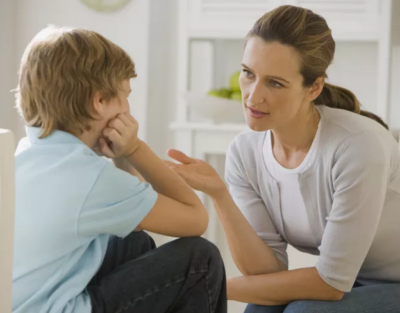 Explaining Covid and its implications to your children is a lot easier than the sex ed conversation you had. She asked parents to: “Think about your child’s needs”
Does your child have:
• Special learning needs?
• Any medical conditions that may make them prone to severe disease if they get COVID-19?
Talk with your child’s doctor to discuss the risks.
So far, she explained, most children infected with the virus experience mild symptoms.
• Fever
• Cough
• Runny Nose
• Sore Throat
• Headache
• Body Ache
• Diarrhea
Many children have mild or no symptoms. Additionally, children account for a small number of COVID-19 cases overall.
Think about the people with whom you live
Most people will develop minor symptoms and recover on their own.
The risk of severe illness and outcomes is higher for those who are over 70, or who have chronic diseases like diabetes, high blood pressure, heart disease or cancer.
Every family is unique
Decisions around heading back to school will be different for every family depending on:
• their child’s academic needs
• whether their child or household members are at increased risk of severe illness
• the family’s unique situation
The role of Public Health
Setting out what the role of Public Health is during a pandemic should really be: we do what has to be done when it needs to be done and prepare as well as we can for something that is new to everyone.
Work with the school board to ensure measures are in place to protect our students:
• active daily screening
• no mixing of cohorts (or classes) in the elementary years
• ensuring children understand how to properly wear face coverings or masks
• enhanced hand hygiene and cleaning
 An illustration of what the covid19 virus is believed to look like Support development of safe school reopening plans
Provide recommendations and resources to help school boards and private schools develop policies and procedures, adhere to infection prevention and control practices and plan measures to ensure the health and safety of staff, students, parents/guardians and visitors.
• Support training and educational opportunities
• Develop processes and protocols for managing sick students and staff
• Develop guidance around managing a confirmed case and an outbreak
• Ensure schools have child-friendly resources that support healthy behaviours.
The biggest tool we have working for us is our own individual behaviour. Wear a mask, wash your hands frequently and maintain a safe social distance. That little bugger of a virus wants to jump all over you.
If you want to know more about just how the virus does what it does – check out the link below. If your high school student child has an interest in science – pass it on.
How the virus gets inside you.

 By Staff By Staff
September 1st, 2020
BURLINGTON, ON
Our Mayor reports that: “As work continues to create an engaging and pedestrian-friendly link between Martha Street and Brant Street, building a walkable and vibrant connection between the multi-use path (Centennial Bikeway) and our downtown core, the vote is in for the concept that will be used between Martha and Pearl Street.
“Our community took the time to vote and make their voices heard between July 27 and August 17 – and Concept 2 was the winner!
Construction on this section is slated to begin in the Spring of 2021.
There was no mention on how the vote worked – not any mention as to just how many people actually took part in the vote.
No mention either as to what the cost will be.
We can tell you that when completed the Promenade will allow a person to walk or cycle from the Oakville border to the border with Hamilton. And lots to see along the way.
 How many people voted for this and what is it going to cost ? 
 By Pepper Parr By Pepper Parr
September 1st, 2020
BURLINGTON, ON
 No mention of what will happen to the school house. It does need an upgrade – perhaps the next time the park is being given some attention. Lowville Park will be closed to all vehicles starting September 8th, which is when Phase 2 of the Master Plan for the park will see construction begin.
Visiting the park will no longer require a reservation.
 Rob Peachey, on the left, Manager Parks and Open Spaces for the city, talks through some solutions to managing the very large weekend crowds. The park will remain open but visitors are strongly encouraged to walk or bike to the park as there will only be limited on-street parking at the east end of Lowville Park Drive. There is no other on-street parking in the area; please park according to the parking signage. Vehicles parked in other areas of the road will be ticketed.
Areas of the park under construction will be closed. For your safety, please stay out of the areas marked as closed.
 An advertisement that ran in the Milton Champion August 20th. Construction doesn’t talk to communications. The project will include:
• Picnic areas – renewal of two existing picnic areas with improved accessibility
• Parking lot renewal with new asphalt surface with improved drainage, improved entrance area, additional trees and plants. The number of parking spaces will be kept the same
• New information signage center to highlight trails and park facilities, including picnic areas
 A river runs through the park where the salmon spawn and children get to play. Construction is expected to be completed in December 2020, weather permitting.
Rob Peachey, Manager of Parks and Open Spaces explains that the “.. biggest change people will notice is the improved parking lot with improved drainage including bio-swales, trees and new asphalt. Once this is finished in December, Phase 2 of the Lowville Park Master plan will be complete. It is a great park that has a lot to offer families, nature lovers and anyone who wants to enjoy this beautiful, natural setting. Realize that there is very little parking available on Lowville Park Road.”

 By Staff By Staff
August 31st, 2020
BURLINGTON, ON
A joint two day operation involving the Ministry of Transportation and Halton Regional Police Commercial Motor Vehicle Inspectors occurred on August 25 and 26, 2020, in Burlington.
 The results of the 2020 two day venture is as follows: The results of the 2020 two day venture is as follows:
• 111 Inspections (heavy and light commercial motor vehicles)
• 40 vehicles placed out of service for either mechanical or driver related issues
• 110 Provincial Offence Notices issued
• 1 arrest for blood alcohol concentration 80mgs or more
The results of previous commercial vehicle inspects in 2018 and 2019 are set out below.
In 2019, despite very poor weather conditions they inspected more than 300 commercial motor vehicles.
The two-day enforcement blitz, that involved officers and inspectors from the Halton Regional Police Service, along with assistance from neighbouring police services, the Ministry of Transportation and the Ministry of Finance/ Environment yielded the following results:
• Total commercial motor vehicles inspected: 308
• Total commercial motor vehicles taken out of service: 99 (33 percent failure rate)
• Total charges laid: 239
• Sets of licence plates seized by police: 11
 Close inspections – it keeps the highways safer 2018 Results:
• Total commercial motor vehicles inspected: 443
• Total commercial motor vehicles taken out of service: 143 (32 percent failure rate)
• Total charges laid: 268
• Sets of licence plates seized by police: 13

 Michele Bogle Michele Bogle
August 31st, 2020
BURLINGTON, ON
In this segment of an ongoing series the article addresses continuing concerns as well as new ones. All of the staff and parents in this series have signed the “Intent to Return” Survey. The group participating is mixed with regard to whether their child is ‘distance learning’ or returning to school.
The participants in this series are real. Their names have been changed to preserve their identity.
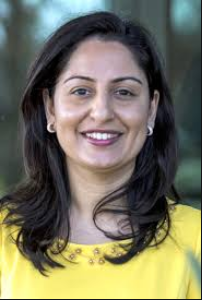 Dr. Hamida Meghani, – Medical Officer of Health for the Region of Halton – in the most stressful job of her career. We’ve learned from Halton Medical Officer of Health, Dr. Meghani, that the Health Protection and Promotion Act, requires a member of a household who tests test positive for the virus must self-isolate for 14 days.
Last Wednesday, at a virtual Town Hall, we learned that 16,000 have chosen distance learning over classroom attendance.
The Board is now scrambling to create three elementary and one secondary, virtual schools which calls for a significant deployment of teaching staff. The virtual schools will follow the traditional curriculum for both elementary and secondary students.
There were no specifics in the outline during last Wednesday’s town meeting with regard to Special Education classes. Details that were needed earlier than the August 23 deadline, in order for parents to decide whether their child returns or not. Grace Penny and her husband adopted two elementary aged children who require additional attention. Because of the lack of planning to make an informed choice she and her husband have opted to keep their children home. Grace added that there is a great financial burden associated with keeping their special needs children home. A decision, not made lightly. She continues that there is separate funding but that their combined income excludes them from qualifying.
Special Education Teacher Paul Pratt had questions about the use of shields instead of masks. Are there funds being allocated for these ‘in person’ students who are no longer sharing materials? Will the teachers be asked to use the materials that they have already purchased for their students and will they be reimbursed?
What will the ratio of EA’s be in these classes to meet needs in the new scenario? Superintendent Podrebarac spoke of “a host of choices” for protective gear but didn’t specify.
 Superintendent Terri Blackwell with Director of Education Stuart Miller at the original registration for the iStem program at Aldershot high school. Superintendent Blackwell addressed the subject of transportation in last Wednesday’s meeting. Each school bus would now be loaded to capacity, potentially three to a seat. While windows can be opened until the onset of colder weather, without the spacing earlier suggested, would the wind from the open windows blowing air directly into faces not much more than two feet behind in each row pose a health risk?
In this same meeting ventilation was addressed within the schools. For some older schools the standard code was for a class window to only open four inches for the safety of the children, when built. For some, like the classroom Sandra Parker taught in, there were no windows. This poses great concern for many of her colleagues and for those of Maria Vanelli’s.
Some teachers like Maria have a ‘high risk’ family member at home and have opted for virtual teaching. An answer to which would give her and her family great comfort in knowing if the Board will accommodate her.
Mila Sanchez and her husband, parents of two elementary aged girls, grades two and four works outside of the home. They are unable to find after school care for their children, a problem shared by many of their friends.
 The carpets will not be on the floors in Halton schools – those toys would be sanitized after every class, Elementary school teacher Maria Vanelli discussed that she was pleased about the new decision to have students in grades 1-3 wear masks. She suggested that parents might want to practice with their kids before the start date, 10 minutes a day gradually increasing the time. It would be of great help to the teachers. Her final thoughts, “Goes to show how COVID is affecting all aspects of life , from education to shortage of caregivers to added stress on all of us.”
Library Information Technician Carmen White would like everyone to keep in mind that, “It’s going to be scary for everyone and we need to realize that people deal with all of this differently and we need to be KIND to each other. Reality is, there isn’t the space, teachers or money for smaller classes, so we need to do the best we can.”
I hear an unyielding sense of frustration from parents and teachers. The Board has no easy task and no perfect plan, and not enough money to make it all right.
 Michele Bogle is a Burlington resident who writes for the Gazette on community issues. She has written several children’s books for ages 4-12, which can be found under the pseudonym, ‘Cameron S. Matthews’. Michele studied journalism from the University of Pennsylvania. Michele Bogle is a Burlington resident who writes for the Gazette on community issues. She has written several children’s books for ages 4-12, which can be found under the pseudonym, ‘Cameron S. Matthews’. Michele studied journalism from the University of Pennsylvania.
Related news stories in the series:
Part 1:
Part 2:

 By Pepper Parr By Pepper Parr
August 30th, 2020
BURLINGTON, ON
The province announced that 500 +/- nurses would be hired to assist the return of students to school.
 Every retired nurse in the province is going to want to take a closer look at this opportunity. What wasn’t at all clear at the time was who would actually do the hiring: the schools – they didn’t think so. The Regions – probably but they were still working their way through the document they got from the province and working out terms and conditions.
Meanwhile every retired nurse in the province who can find their little white cap with the black stripe would be lining up for what looked like an easy assignment.
 Not enough to put a nurse in every school but there should be enough to create a core of nurses at each Public Health Unit who can respond quickly. In its statement Halton Region set out what they expected – subject to a firm agreement in place of course.
Expected roles for School Health Nurses
Support existing school health and communicable disease control programs in public health by:
• Providing support to school boards and schools in the development and implementation of COVID-19 health and safety plans
• Providing sector specific support for:
• Infection prevention and control
• Surveillance, screening and testing
• Outbreak management; and
• Case and contact management
• Supporting communication and engagement with parents and local communities, as well as the broader health care sector.
With schools actually re-opening on the 14th – there will be enough time to get the nurses hired and train them for the task that will last until the end of the year.
The question in the air is – will there be a second wave and will Halton see very much in the way of infections?.
A school board just outside Montreal where schools opened last week reported a teacher who was found to be infected on the first day back in classrooms. Isolation for all the children she was teaching along with her own social circle.
 The provincial announcement was made late in July. 
 By Staff By Staff
August 28th, 2020
BURLINGTON, ON
The Alcohol and Gaming Commission of Ontario (AGCO) has received an application for a 14th cannabis retail store in Burlington called Meta Cannabis Co. Walker Place. The proposed location at 3505 Upper Middle Rd., Unit D003 is now up for public comment.
 Written comments about the proposed location will be received by the AGCO until Thursday, Sept. 10, 2020 and may be submitted online at www.agco.ca/iAGCO. The AGCO will accept submissions from: Written comments about the proposed location will be received by the AGCO until Thursday, Sept. 10, 2020 and may be submitted online at www.agco.ca/iAGCO. The AGCO will accept submissions from:
• A resident of the municipality in which the proposed store is located
• The municipality representing the area in which the proposed store is located and/or its upper-tier municipality.
Comments submitted to the AGCO should relate to the following matters of public interest:
• Protecting public health and safety
• Protecting youth and restricting their access to cannabis
• Preventing illicit activities in relation to cannabis
After Sept. 10, the AGCO will consider all written comments and available information to decide whether the application for the proposed store location will be approved.
 Line up at a Burlington cannabis location on their opening day. Currently there are eight licensed cannabis retail stores in Burlington, including three approved since the ACGO moved to an open licensing system for cannabis retail store applications earlier this year. The eight stores include:
• Relm Cannabis Co. 4031 Fairview St. Suite 103
• Corner Cannabis 3007 New St.
• The Hunny Pot Cannabis Co. 1505 Guelph Line, Unit 3-4
• Friendly Stranger Plains Road 1025 and 1059 Plains Rd. E., Unit 3
• Pioneer Cannabis Co. 1200 Brant St., Unit B-004
• mihi 3500 Dundas St., Unit A1B
• Canna Cabana Burlington 2400 Guelph Line, Unit 2
• Welcome Cannabis 1401 Plains Rd., Unit 5
Four additional cannabis retail stores are under review by the AGCO and two are out for comment, including the current application.
The city includes the following statement in every media release they issue:
“Burlington is ranked as Canada’s best community and best place to raise a family. It is a City where people, nature and businesses thrive. As residents continue to rediscover many of their favourite spaces and activities in the city.”
City Council voted to allow the operation of retail cannabis stores in Burlington on January 14th 2019
Oakville does not have any retail cannabis locations. All that business comes to Burlington.

 By Pepper Parr By Pepper Parr
August 28th, 2020
BURLINGTON, ON
In a statement released by the Halton Region Public Health office we learn that they “continue to work closely with the Ministry of Health, local school boards and community partners to ensure all students return to a safe learning environment this September.
 Dr Meghani, the Regional Medical Officer of Health “This includes providing recommendations to school boards for reopening to be considered in conjunction with directives and guidance provided by the Province. The school boards decide what measures to implement based on their circumstance.”
The key words are that the school boards make the decisions.
 Setting this classroom up so that the students are six feet apart if not going to be an easy. As families prepare for the start of the school year, Halton Region Public Health is communicating directly with parents in several ways, including a video, a letter and webinar events (the HCDSB webinar was Tuesday night and HDSB webinar was Wednesday evening,”
Halton, like the rest of the province is “waiting to hear from the Province about the terms and conditions on funding to hire nurses, however there are many public health nurses and several staff who are already supporting the school administrators and community. We will also be recruiting temporary nurses to help with our efforts in schools.”
The decision by the Halton District School Board to move the opening up of classrooms to the 14th of September with some students being introduced to their classroom the week before, has school principals scrambling to learn which parents have decided to send their children back to the classroom and how many have decided to have their children stay at home and learn on line.
A Milton parent set out the concern many have about sending their child into a classroom; she said: “I’ve decided to keep the kids home for the foreseeable future.
“I’ve had to drop most of my volunteer commitments to focus on work and the kids. It hasn’t been easy but we have settled into a nice routine and are enjoying the time that we have together. This whole COVID thing has forced me to really take a deep look at my priorities and for now it’s my family.”
School principals have to work on a class by class, grade by grade level to learn what the population of the school is going to be. With this data they can determine how many students will be in a class. If sufficient numbers decide to stay home a principal may have to combine classes.
Logistically it is a bit of a nightmare.
 Short trips – full loads. School busing just another potential problem area. Getting students to school is a challenge as well. Those who take the school bus (many really have no choice) will find that the most recent plan was to fill each bus but to make the trips as short as possible.
The Board’s Superintendents have all been assigned to specific problem areas: elementary, secondary, mental health – name the problem and there will be a senior staff person on top of it and tracking the problems.
These people have been working flat out since March when they found that they had to recreate the way students were to be educated amidst an environment where the province took the time they needed to determine what was safest and the most politically expedient.
The virtual Town Hall did give the public a good opportunity to ask questions on Wednesday and Board senior staff were able to provide answers. There wasn’t a lot of good news.
Parents can forget the idea of actually entering a school. The doors will not be open to a parent who wants to meet with and talk to a teacher about problems with their child.
 Teaching the high school students to stay within their cohorts is going to be a challenge – one MMR principal Claire Proteau is up to. Given what we know about covid-19 – and there is a lot that is not known – the focus is now on limiting as much as possible who students interact with.
This virus is spread from person to person – the solution then is to limit the number of people a student interacts with.
Every student will bring with them every person they and members of their family have interacted with and then interact with fellow students who bring the same thing with them.
Situations like this drive the public health people crazy – they wait, poised, to move quickly when there is a sign that there might be an infected student in a school and if there is they move immediately to trace the contacts and inform them that they need to self-isolate.
All it takes is for one high school student to go to a party, pick up an infection and bring it back to their class and spread whatever they might have picked up.
There is a huge bureaucracy in place to deal with the problems – and there will be problems.
The first line of defence is in the homes – explaining to students who see themselves as invincible, that they are both part of the problem and probably the biggest part of the solution.
We are about to find out how good we are at taking care of ourselves as a community.
–

 By Pepper Parr By Pepper Parr
August 27th, 2020
BURLINGTON, ON
During a two and a half hour virtual Town Hall meeting last night parents with children attending the Halton District School Board (includes Burlington, Oakville, Milton and Halton Hills) learned that school will not start on September 8th, but will instead start on September 14th.
Some students will be “introduced” to their school the week before.
 Masks will be required – all grades 1-12 Masks will be required in every grade from 1 through to 12.
The Medical Officer of Health has recommended that Junior Kindergarten and Senior Kindergarten (JK and SK) also wear masks.
Students will get mask breaks during the day.
The public heard a half hour presentation from the Medical Officer of Health during which she set out the rules that will ideally contain the spread of the Covid-19 virus, which in Halton has been quite low.
Parents had been asked by the Board to return Intent to Attend forms so that the administration could determine which form of education students would be taking – in the classroom or virtually at home.
Parents wanted more information before sending in the forms – the school board wasn’t able to give out information because they didn’t know what the class sizes were going to be – a classic Catch 22 situation.
 Director of Education Stuart Miller Earlier in the month the board administration had announced that it was creating virtual schools, which they would need in the event of a school- or system-wide shut down.
It was first seen as something that might be needed – that might turned out to be necessary when more than 1600 students decided to not attend a school – they have chosen to be educated virtually.
The virtual schools will not be “local” – they will include students from within the Region.
There will be three virtual schools for the Region and a single virtual high school.
Details were a little sketchy – parents were told that all the information they needed was “on the web site”.
The Gazette will chase down the details in the days ahead.
School is going to be very different come September 14th.
Director of Education Stuart Miller in his closing remarks advised parents to “trust their own judgement”.
“Staff are nervous” he said. “I am nervous”. “Trust your own judgement” when deciding which form of education your children are going to get.
A Milton parent said to a friend and shared with the Gazette:
“I’ve decided to keep the kids home for the foreseeable future.
“I’ve had to drop most of my volunteer commitments to focus on work and the kids. It hasn’t been easy but we have settled into a nice routine and are enjoying the time that we have together. This whole COVID thing has forced me to really take a deep look at my priorities and for now it’s my family.”

 By Pepper Parr By Pepper Parr
August 26th, 2020
BURLINGTON, ON
It was all about what people thought – the brand, the image – backing up why Burlington was the best mid-sized city in the country.
 The stretch of Road at the bottom of the section of Martha the Mayor lives on – not what her Worship thinks the city can put up with. It has to do with the weeds – the things that were sprouting up through the pavement in medians all over the city.
During Standing Committee meetings Staff did their best to tell Council that they didn’t have the people to get out and do the work.
 Walker at New Street  This is the Burlington this council believes the citizens want and they were going to make certain that they got it. All the part time and summer help had been let go when the lock down took place in March.
There wasn’t a member of Council who wasn’t prepared to push Staff and direct them to find a way.
And find one they did.
They came back with three options: contract the task out to someone; spend $40,000 and have the work done internally or do nothing.
Do nothing was not an option.
 Councillor Angelo Bentivegna – he will remind Council of this spend when the budget is on the table. The $40,000 didn’t look so bad from Councillor Angelo Bentivegna’s perspective – it worked out to $98 a median.
So they went for it.
Bentivegna didn’t vote for it. Everyone else did.
The shiver that the budget is going send up the spines of this Council isn’t being felt – yet.

 Michele Bogle Michele Bogle
August 26, 2020
BURLINGTON, ON
The people mentioned in this article are real. They are part of a group I assembled to serve as a sounding board to provide insight into what parents and educators are thinking and feeling. Their real names are not used’ allowing them to speak freely without any implications on their family life and their livelihood.
With just 12 days from the ‘Reopening School’ start date for most in the province, parents, educators and the boards are frustrated.
What has happened since this writer’s last article on the subject?
In light of new information from the Ministry released on August 14, the Halton District School Board extended the deadline for parents and guardians to complete the ‘Intent to Return Survey’ to August 23 at 4pm.
There was then a lengthy Board of Trustees meeting on August 21st.
What do we now know that we didn’t know or understand before?
 The Halton District school Board trustees have been putting in long hours – the Chair has found he voice and is speaking out to the Ministry of Education. We have some questions answered but many more are unanswered at this point. One very significant hindrance to implementing or laying out all the details was the fact that the board needed critical mass numbers in order to present an accurate working-model. The parents and guardians needed to know full details of the reopening before deciding, thus creating a conundrum.
Last week, Library Information Technician Carmen White informed us that funding for the additional teachers to allow for 15-person class sizes is not available. Concerns expressed by elementary school teacher Maria Vanelli and parents to elementary school students, Jeremy and Talia Unger, are shared by most parents and educators.
 Director of Education Stuart Miller 
This question was answered in the long meeting last Friday night. Stuart Miller clarified by stating that the province has given the directive of same class sizes with an option for parents to choose distance learning. The safe-guards would be in place with respect to managing the cohorts and following the strict Halton Health protocols and guidelines. When accurate numbers of students from the surveys are determined and some classes have larger amounts of distance learners, the Director was asked whether he would take ‘in-person’ students from other classes in the same grade and place them in those classes to minimize overall class sizes and the answer was, “no”.
He went on to explain that Halton class sizes, on average, fall well within the maximum numbers allowed per province guidelines and that instead the class of fewer students could be moved into existing classes within the same grade, freeing up a teacher up for a virtual class.
French Immersion ‘in-person’ classes would exist, numbers permitting. These students would otherwise merge with the general population until the ministry directs a return to school. A concern Talia Unger also has.
The Board does not currently have a plan to allow for French Immersion students to be caught up with their curriculum in the event that there are no French Immersion classes designated.
High school teacher Sandra Parker struggles with why the ministry allows for customized back-to-school models from one board to another. “Wouldn’t it be easier to implement the same plan across the province.” The differences generate ongoing questions from parents as to “why” we aren’t implementing the same practices.
Talia Unger also expressed thoughts of not wanting the school year to go late into the summer should there be a delayed start date. With the need for critical mass numbers in mind, Information Technician Carmen White as well as high school teacher Sandra Parker shared that hundreds of parents/guardians had not completed the survey in each of their schools by the deadline, and when contacted Monday, more than half refused to decide.
Elementary school teacher Maria Vanelli noted that controlling lunchtime at the elementary level is easier because the students will continue to bring their lunch and remain in their classroom to eat. Conversely, at the high school level when the 180 minute morning class is over, the students are expected to head directly home for lunch, after which they will prepare for the virtual 120 minutes.
Though Director Miller offered last Friday that the school will provide guidance for the parents and students on maintaining social distancing, there is great opportunity without any policing of each student, for them to spend the afternoons any way they choose. Lunch stops at fast food locations and/or joining friends outside of their morning cohort is more than probable. It would seem from the meeting, that Director Miller has approached this unprecedented situation with the ideal that the school will be responsible for the education and the parents are ultimately responsible for the health care of their children.
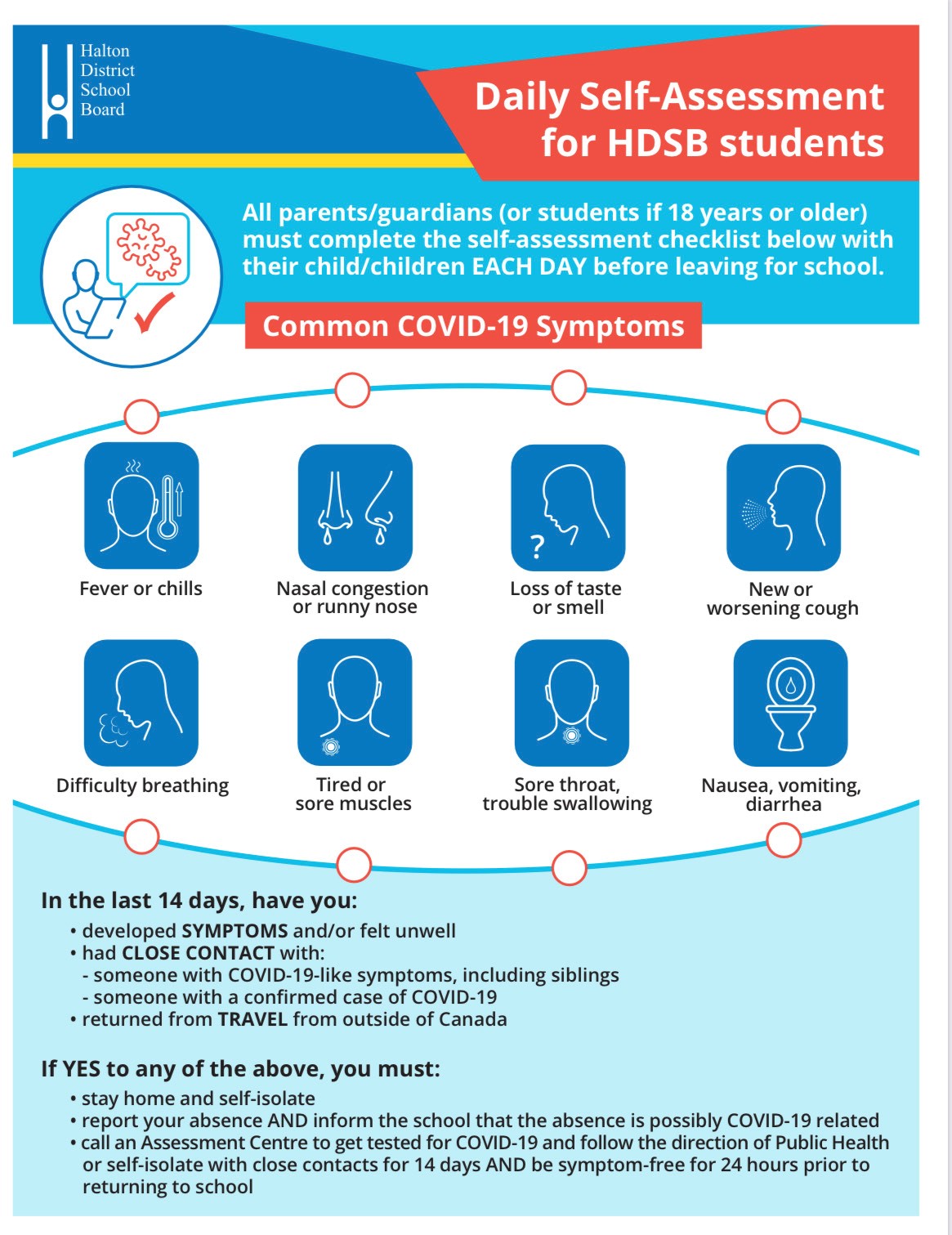 Where secondary students eat their lunch, who they hang out with outside school property and whether a responsible daily self-assessment is being done isn’t reasonable for the school to manage, but the idea that it’ll all work out if precautions are taken within the classroom walls, and let parents worry about the rest, is simply a naive notion. Where secondary students eat their lunch, who they hang out with outside school property and whether a responsible daily self-assessment is being done isn’t reasonable for the school to manage, but the idea that it’ll all work out if precautions are taken within the classroom walls, and let parents worry about the rest, is simply a naive notion.
There is a faculty group that has been left out of conversation: Library Information Technicians. The libraries will be closed and there has been no direction on what the administration will delegate this group to do. Carmen White has decided to take a proactive approach and is creating work for herself in order to remain relevant in this ever-changing school plan.
Director Miller was also asked whether he’d consider changing the direction for K-3 students to wear masks which has become a great concern for parents and educators alike. His response was that they won’t be wearing them. He feels that because of the ages, the children would distract from learning by needing the attention of the teacher to manage the wearing of the masks. Other boards have mandated mask use for all grades. Educators Teresa Fisk and Sandra Parker would like to know the delivery timeline of the PPE masks.
Parent Mary Sawyer is happier about an option to change learning models in November, though she would have preferred an earlier option of switching in October. The option to switch from ‘distance learning’ to ‘in-person’ can pose considerable problems as pointed out during the Friday meeting. There are the logistics of increasing cohort sizes and repopulating classes with students who make a change. There are also transportation and locker changes to control movement of cohorts.
The student would have to be in an isolation classroom for 48 hours before integrating. How would the schools have a sufficient number of rooms available in relation to how many opt to change? If the desks are two metres apart, why would it matter if students sit two metres apart in an isolation room, or in the regular classroom? Extra staff is required to monitor and/or teach those in isolation. What about grade differences? It could present a logistical nightmare.
Parent Talia Unger approves of the outdoor learning concept that is being considered through immeasurable pressure by the parents. Plans are in discussion. Talia welcomes the idea of the children not having to be encumbered with masks during study because of the distraction, as well the concept of classes being held outdoors with all of the benefits that surround that idea. Some considerations for the Board are proper clothing during cooler weather and availability of naturalized playgrounds away from traditional apparatus, like monkey bars. The board agreed to allow funding for this. Unfortunately there just isn’t enough time to build playscapes.
Blackwell addressed one of EA teacher Teresa Fisk’s concerns about shuttling. There will be a seating plan, 24 kids on the bus at a time, less than half the capacity, and they will exit and enter in the same order. Routes will be no longer than 12 minutes in length (barring traffic and inclement weather delays). No supervision on the bus with one bus driver. Buses will be sanitized between each school drop off.
 After the Board confirmed that they were going ahead with the ‘quadmester’ model in the secondary classes, Director Miller remarked that, “No model will satisfy everyone because feedback was very mixed. Parents prioritized different aspects of the options.” The Board agreed that this learning model met most public health requirements in protecting cohorts. For high school teacher Sandra Parker the quadmester is an agreeable option but has a concern shared by other teachers with regard to the timeline before the school start date of facilitating enough prepared lessons for the 180-minute virtual classes everyday in light of the fact none of the teachers currently know what they are teaching. There will be no handouts, no take home materials at all. All instruction will be virtual. An impossible task within a short period of time. After the Board confirmed that they were going ahead with the ‘quadmester’ model in the secondary classes, Director Miller remarked that, “No model will satisfy everyone because feedback was very mixed. Parents prioritized different aspects of the options.” The Board agreed that this learning model met most public health requirements in protecting cohorts. For high school teacher Sandra Parker the quadmester is an agreeable option but has a concern shared by other teachers with regard to the timeline before the school start date of facilitating enough prepared lessons for the 180-minute virtual classes everyday in light of the fact none of the teachers currently know what they are teaching. There will be no handouts, no take home materials at all. All instruction will be virtual. An impossible task within a short period of time.
Patrice Henry is a single parent of a grade 10 student who has expressed a need for an electronic device for her son to use during virtual class time since she uses hers for work at home. Director Miller addressed this subject by confirming that there was no funding available for devices required. Each Principal will distribute at their own discretion from supply on hand. “Such sources have included the library supply”, noted Carmen White. Miller continued by adding that this shortage presented scheduling conflicts for classes requiring devices at the same time.
Kathy Duncan’s concern for the special ed students was briefly addressed by an indication that if demand warranted it, a study hall would be provided. This of course brings up needs for EAs among health & safety concerns.
The HDSB website will have a link available for today’s ‘Reopening School Virtual Information Session for Family’, at 7pm. Dr. Hamidah Meghani, Medical Officer of Health will be present. The Board is requesting that those attending with any questions for Dr. Meghani, fill out the form provided on the Board website prior to the meeting in order for the doctor to be prepared with the answers required.
Mila Vasquez is a married mother of two girls in elementary school. She has questions about students presenting symptoms and how they are treated. The Board expects all parents and students to self-assess every morning prior to school. Should a student present symptoms without any evidence of whether they have a cold or the virus, it is recommended that the student remain at home. A doctor’s note is then required before the return to school. She is also concerned, since one of her daughters is susceptible to colds and flu, the requirement of a frequent doctor’s note can become costly during the winter season. Carmen White added that for parents with a child who presents symptoms but are unsure as to whether it’s just a cold or not, might often choose to send their child anyway when considering the use of their own limited sick days as well as potentially jeopardizing their job if they stayed home with their child. There was no information on whether or not the sibling of an infected child needed to isolate as well.
In the first article of this series, Talia Unger mentioned concerns about the treatment of students who present symptoms, and/or return to school after self-isolating for a cold or the virus. The Board had a strong reaction to how serious they intend to monitor closely, stigmas that could arise as a result of kids returning after being absent due to illness. They will also spend time educating students with regard to stigmas around racism in association with the virus.
If you have health questions you’d like answered, make sure to fill out the form provided on the HDSB website prior to tonight’s meeting at 7pm.
 Michele Bogle is a Burlington resident who writes for the Gazette on community issues. She has written several children’s books for ages 4-12, which can be found under the pseudonym, ‘Cameron S. Matthews’. Michele received her education in journalism from the University of Pennsylvania. Michele Bogle is a Burlington resident who writes for the Gazette on community issues. She has written several children’s books for ages 4-12, which can be found under the pseudonym, ‘Cameron S. Matthews’. Michele received her education in journalism from the University of Pennsylvania.


 By Ray Rivers By Ray Rivers
August 23rd, 2020
BURLINGTON, ON
Did you know that Germans are now able to buy a brand new Renault electric vehicle (EV) for the cost of a cell phone contract?
 Germany has gone further than most countries to promote the use of electric vehicles. The Renault can be had for the equivalent of a cell phone contract. Yes, new EV subsidies there almost completely cover the cost of a new economy car, providing it’s of the plug-in variety. Europeans have always taken climate change seriously and are more prepared to take action than the rest of us – but even they are not doing nearly enough.
We, the people on this planet earth, keep breaking records on just how much climate warming pollution we generate.
2019 hit a new record, pumping 36.8 billion metric tons (gigatonnes) of carbon dioxide into the atmosphere. Thirty-six gigatonnes (Gt) ! It’s like we are in a competition to see how fast we can waste the planet.
To put that into context, if we took all the land mammals on the planet and put them on a scale they’d weigh one whole gigatonne. It is estimated that the entire human race together would weigh less than half a Gt. So that’s a lot of carbon pollution and it has led to a higher concentration in the atmosphere than at any point in at least the past 800,000 years.
The thermometer in Baghdad soared to 50 degrees C the other day. That’s 125 F, which is the ‘keep warm’ setting on my kitchen oven. And whether you measure it in Fahrenheit or Celsius America’s Death Valley won the title of hottest place on earth at 130 degree F (56 degrees C). And as you should expect, mother earth is responding to these carbon emissions even faster than anyone predicted.
 One of the largest ice packs on the planet. One of the largest ice packs on the planet, Greenland’s ice shelf, has passed the tipping point and is irreversibly melting faster than you can shake a stick. Combined with the rapidly increased melting of ice in the Antarctic, Canada and Russia, the US Geologic Survey, estimated that the world’s oceans could eventually rise 70 metres (230 feet) in a bunch of years. 70 metres is like 45 people standing one on top of each other.
The land below and adjacent to the ice caps is called permafrost, because it never used to thaw. Sealed in by frozen ground for millennia, since the last ice age, there are all kinds of treasures buried there, including some more very ancient viruses. There is also a lot of methane, the stuff you burn in your furnace. It’s from very old decayed vegetation.
It is estimated that there could be 1400 gigatonnes of carbon locked up as methane under the Arctic submarine permafrost alone. Methane is something like 32 times more powerful as a greenhouse gas than CO2. So if the scientists are right about potentially releasing those 1400 Gt of methane – do the math – we’re in for one helluva a party. And did I mention there is even more permafrost thawing on the land in northern Canada and Russia?
Further, scientists are now connecting global warming to a puzzling shift of the earth’s axis. Over the last 20 years there has been an increasing drift of the north pole away from Santa’s workshop in Canada’s north. That can be attributed to the melting of Greenland’s ice sheets. Greenland has been losing over 200 gigatonnes of ice a year since 2000 increasing the volumes in the oceans in the process. Meanwhile Antarctica has also lost over 90 gigatonnes.
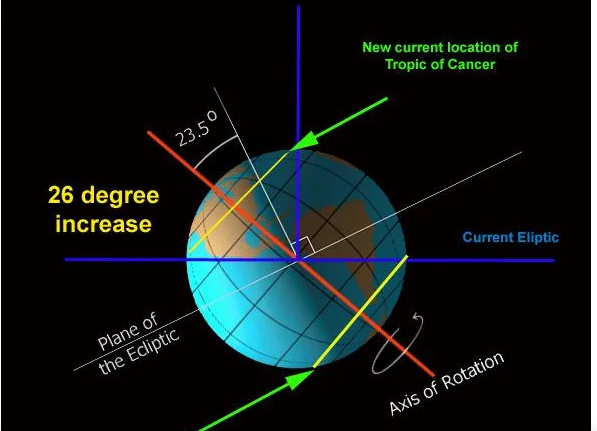 Will the changing climate have an impact on the earth’s axis – and if it does what impact will a change in that axis have on the lives we live? As the weight of the ice lifts off Greenland the poles start to migrate. It is uncertain what all this means for us planetary inhabitants, aside from our GPS devices needing some kind of updating, and poor Santa of course. But weather patterns will no doubt be heavily impacted as the rotation of the planet is affected.
So the impacts of warming the planet are not just about more flooding, more violent storms, more droughts and more massive forest fires, which in turn just add more carbon into the atmosphere.
COVID-19 might be the most immediate crisis before us now but global warming is the greatest existential threat we face. Yet we’ve all known about climate change for at least four decades and have failed to seriously respond to this growing crisis – a crisis which will be far more deadly than COVID-19.
An EV in every household Is a good start. And Germany is not the first jurisdiction to offer carrots instead of sticks to get their citizens to curb their carbon footprint. About half of the cars sold in Norway are fully electric, for example.
Ontario’s last government also offered generous EV subsidies. They started building a viable carbon-free electrical system, a viable carbon emission trading program and so much more. But we the voters clearly didn’t care about all that. Instead we voted in a government that clearly doesn’t get global warming, and has done it’s best to tear down all of those efforts.
Next time we’ll address why this is happening.
Meanwhile please join the discussion. As we said, perhaps too often, going into COVID – we’re all in this together as well.
 Ray Rivers, born in Ontario earned an economics degree at the University of Western Ontario and a Master’s degree in economics at the University of Ottawa. His 25 year stint with the federal government included time with Environment, Fisheries and Oceans, Agriculture and the Post office. Rivers is active in his community; he formed the first Sustainability Committee in Burlington. Ray Rivers, born in Ontario earned an economics degree at the University of Western Ontario and a Master’s degree in economics at the University of Ottawa. His 25 year stint with the federal government included time with Environment, Fisheries and Oceans, Agriculture and the Post office. Rivers is active in his community; he formed the first Sustainability Committee in Burlington.
Background links:
Iraq Oven Temp – Hottest Temp Ever – 2019 Record
Canada Last Ice – Europeans – Free Car –
Greenland Ice – Earth’s Axis – Permafrost –

 By Pepper Parr By Pepper Parr
August 25th, 2020
BURLINGTON, ON
Parents are concerned, somewhat confused and not at all certain what is going to happen when the schools are re-opened.
The Halton District School Board is holding a Town Hall meeting on Wednesday and will be doing everything they can to answer the questions parents have.
 Trustee Chair Andrea Grebenc with Director of Education Stuart Miller The Director of Education will have his team of Superintendents on hand to get into the specifics.
This team has been at it since March – learning that the system was being shut down meant these Superintendents didn’t just have to pivot – they had to do a 180 and make something happen with little in the way of resources or prep.
Director of Education MIller put it very well when he said: “They didn’t teach us this in principal school”.
Each of the Superintendents has been given an area of responsibility. They have taken their years of experience as classroom teachers and the lessons they have learned as Superintendents and a got teacher in front of students even if it was via the internet.
Parents were upset, students didn’t know what was going to happen each day.
It took a bit of time but the technology to reach out and communicate was found and implemented.
 Superintendent Terri Blackwell running lead for the secondary students, Superintendent Terri Blackwell was assigned to the Secondary school problems and the challenges.
Superintendent Scot Podrebarac took on the elementary students.
Both worked tirelessly with the school principals to help them deal with the students and the parents. There were challenges everywhere and few in the way of easy answers.
 Julia Hunt Gibbons – crunched the numbers to determine what could and couldn’t be done. Superintendent Julie Hunt Gibbons was the numbers person. What would work and what wouldn’t work. Hunt-Gibbons had to take the number of classes, the number of students and come up with options in terms of how the Board could create a schedule that would let the board create a class with 15 to 20 students. She didn’t do it with a slide rule.
When the province said that normal class sizes would prevail – Superintendents gave each other one of those Huh! looks and went back to the numbers.
How do you keep 30 grade 3 students six feet apart in a standard classroom size? Was that possible?
 Colette Ruddock – the heath of every student is her mission. Superintendent Colette Ruddock is overseeing the relationship between the Board of Education and the Public Health Unit.
How will the Public Health people work with the schools – one on one? Who in a school makes the decisions? We were told that the Director of Education believes he has the authority to close a school.
We will learn going forward what Ruddock is going to do – we know now that she is the contact person with the Health people.
There are nurses being brought in by the province but the school boards don’t see the nurses as part of their staffing compliment.
How long can parents and students get on with their lives under these conditions? No one knows – there are really more unknowns than there are knowns.
The Toronto District School Board has been setting the pace in terms of talk back to the government. With the exception of the stiff letter the Halton Trustee Chair sent the Minister of Education.
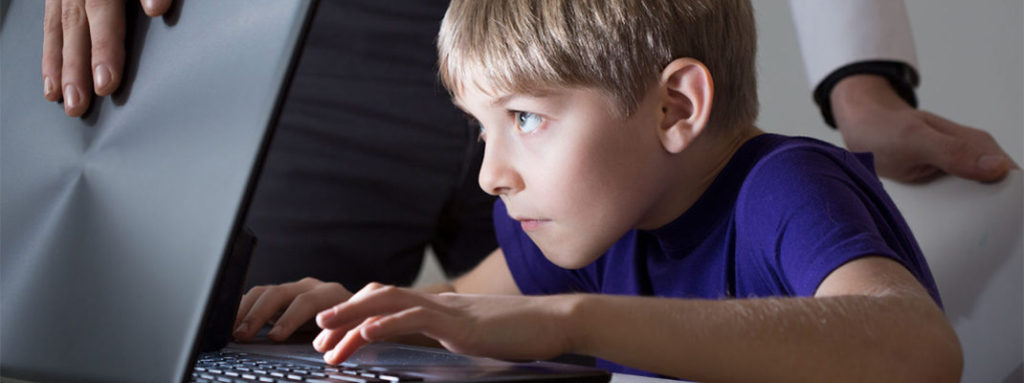 This is what it all comes down to – a student in the hands of a good teacher. Will the school start be later – September 15 is a date being thrown around. Will the return on the part of the students be staggered? A couple of grades one day and a few days later other grades will be added with everyone being in place by the end of the first week.
Gearing up for the day students enter a school is work enough. Behind the scenes there are people across the province giving serious consideration and actually working on what a virtual education system would look like.
If there is the much expected second wave, which will be harsher than the first wave, and everything goes back into lock down – what then?

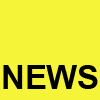 By Staff By Staff
August 24th, 2020
BURLINGTON, ON
Sanity has found the people that determine where it is safe to cross a street.
Burlington got fond of those Wait for the Gap signs along Brant Street. They are history come the 27th – you might be able to buy one as a keepsake on EBay.
The city is converting ‘wait for the gap’ crossings along Brant Street to pedestrian crossovers to be ready for Thursday, Aug. 27, weather permitting.
 The Rainbow marking were prettier The first pedestrian crossovers to be done are at:
• Pine Street
• Elgin Street
• Maria Street
In addition to the three locations along Brant Street, crossovers will also be installed at the Centennial Pathway road crossings in 2020.
These locations include:
• Smith Avenue
• Seneca Avenue
• Delaware Avenue
• Cumberland Avenue
• Woodview Road
• Elwood Road
• Longmoor Drive – 2 locations
• Belvenia Road
New legislation was introduced in January 2016 by the Province of Ontario that gives pedestrians the right of way at road crossings. The new rules are in Part 10, section 140 of the Highway Traffic Act.
Pedestrian crossovers, marked by signs and pavement markings, are a new way for pedestrians to easily and safely cross the road. By law, drivers and cyclists must stop and yield the whole roadway at pedestrian crossovers. Only when pedestrians have crossed and are safely on the sidewalk can drivers and cyclists proceed.
Crossovers are different than crosswalks. Crosswalks are most often located at an intersection with traffic signals, pedestrian signals or stop signs. Crossovers are a designated pedestrian crossing in the roadway, usually not at an intersection.
The new crossovers in Burlington will share key elements, such as:
• signage saying “Stop for Pedestrians”
• ladder style pavement markings in the crossover area
• triangle yield lines (i.e. shark’s teeth) on each approach, indicating where drivers need to stop
Mayor Marianne Meed Ward piped in with: “Residents have been asking for additional measures for making walking around our City easier and this will help. This is part of our commitment to make our streets walkable and help make people feel safe to do so.” Expect to see a photo op at one of these real soon.
 Crossover will: ” correctly prioritize pedestrians over vehicles”. Ward 2 Councillor Lisa Kearns put the English language to a new use saying: “This long-requested improvement will correctly prioritize pedestrians over vehicles in locations where confusion can result in the potential for collisions. Residents enthusiastically welcome the Downtown Pedestrian Crossovers in locations where hundreds of daily crossings are made along lower Brant Street. This improvement puts people first and supports our Council’s commitment to integrated city mobility.”

 By Pepper Parr By Pepper Parr
August 24th, 2020
BURLINGTON, ON
Reflecting the concern of parents across the province Chair of the Halton District Public School Board wrote the minister of Education to once again ask for some clarity on what the province expected of the school boards.
Using language that is seldom seen at this level the trustee wrote: “We can’t afford to get rental spaces, we have to arrange transportation and we have to do this within, what, two weeks?”
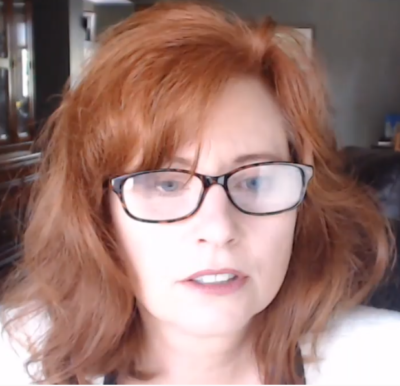 Andréa Grebenc: “Minister – words matter” Andréa Grebenc, Chair of the Board of Trustees, Halton District School Board said what many have wanted to say:
“The Trustees of the Halton District School Board are greatly concerned and seeking clarification regarding a number of items that are critical for back to school planning and ensuring stability and confidence in public education. It is an understatement to note that there is heightened stress among all parties in the education sector and beyond due to the ongoing pressures and concern about COVID-19 and keeping everyone safe and healthy. While the health crisis evolves and demands flexibility, now is a time for collaboration and clarity of vision.
“In your August 13 announcement, there were several items that are concerning:
 There will be no music classes as long as the virus is within the community and no vaccine. The well-being of students, staff, families and the community is the highest priority. In your announcement, you noted that the Province’s Medical Officer of Health has signed off on the current return to school direction regarding existing class sizes in elementary.
You also stated that Boards have the choice to implement greater distancing (finding new spaces) and smaller class sizes than are in that guidance. This is highly confusing and puts our Board in a very difficult position. Elementary class sizes for elementary grades has been a source of broad contention with the Province’s return to school direction to Boards. The announcement created an expectation that would be nearly impossible to meet, particularly before September 8. In Halton, over 1200 new teachers would be required to lower elementary class sizes to 15, and additional space would need to be sourced and outfitted, transportation arranged, etc. In addition to a multitude of logistical challenges, and a lack of rental spaces in areas of need, it is anticipated that the cost to do so would be well in excess of the amount our Board could access from reserves.
Boards are able to utilize a portion of their own financial reserves to implement changes for the upcoming school year. In Halton, reserves have been built over a number of years and earmarked for other high need situations such as upgrading facilities, a home-grown solution to a lack of adequate funding sources for aging schools and administrative buildings.
 This kind of training isn’t going to be possible in September. In the same announcement, you noted a $50M investment to upgrade/address HVAC systems across the province. While additional investment is appreciated, with 72 Boards in Ontario of varying sizes and needs, it is difficult to say how much would flow to each board. For context, to retrofit an older secondary school with a partial air conditioning system has cost in excess of $1M in the HDSB. Facilities staff have been working tirelessly during the summer months to upgrade and update these systems, and inference of lack of safety is not helpful.
Minister, you have spoken many times about working together. It is very challenging when these announcements come with no advance notice, and Boards hear about them at the same time as thousands of concerned citizens of Ontario who, in turn, expect school boards to have answers. These announcements may trigger complex revision processes that often require additional direction from the Ministry which may or may not come in short order. You have also mentioned “scaling up” a number of times, inferring that other announcements could be coming. Systems and people are under great pressure. At this time, staff need to focus on implementing plans for return to school in just over two weeks.
 Students are going to be deprived of most of the extracurricular activity. Staff and students of Ontario school boards should be focussing on a safe return to school, and establishing the new learning and health and safety protocols that the COVID-19 pandemic requires. Overlaying this with new curricula (such as elementary math) complicates these processes and draws energy from where it is needed most. As such, the Trustees of the Halton District School Board are adding our voice to the many letters you’ve received requesting that full implementation of the new math curriculum be delayed, in favour of a measured transition with adequate preparation time for staff.
Minister, words matter. This is not a time for finger pointing. All Boards, and the communities they serve are different, and plans have been developed to reflect those unique restraints and needs. We are asking for consistency and clarity of vision so that all resources can be focussed on implementing back to school plans. The Trustees of the Halton District School Board look forward to actively collaborating with the Ministry of Education to help make the school year safe for students and staff so that students can learn, grow and succeed.
It doesn’t get more direct than that, Good on the Chair for telling it like it is.

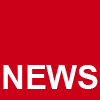 By Pepper Parr By Pepper Parr
August 24th, 2020
BURLINGTON, ON
There is a lot of development taking place in Aldershot where ward 1 Councillor Kelvin Galbraith faces a sticky wicket.
There is a development for a six storey structure that is literally around the corner from his house.
He did the right thing by talking to the City’s Corporate Counsel and then declaring a conflict of interest every time the matter was on a Council agenda.
The developer has taken the position that they listened to the residents and made significant changes to the development. Their revised proposal is now before the Planning department.
 While the height was a concern – the massing was terrible. The immediate neighbourhood consists of detached houses, some two storey in a quiet neighbour with a tennis court nearby. The GO train tracks are to the north where the ADI development is well underway but distant enough not to intrude. The six stories were a clear intrusion.  Proposed revision: The height is still there but the massing is gone. The developer added a number of townhouses on the eastern side. Is this an acceptable improvement? Will it fly? In a letter to city council the developer said:
These revised plans represent a number of significant wins for both the City and the community over the original proposal. The revision to the plans can be summarized as follows:
1. Building Length: Reduced from 113 meters to two 51 metre buildings with a connecting element;
2. Increased front yard setback (from Masonry Court) from 3 metres to 5 metres;
3. Increased rear yard landscape buffer from 1.51 metres to 5.25 metres;
4. Reduction in surface parking from 49 to 29 parking stalls;
5. Elimination of one driveway entrance/exit from the Subject Lands;
6. The addition of townhouse facade to the St. Matthews elevation to ensure appropriate transition to the homes along St. Matthews;
7. Setback of building along St. Matthews of 4.5 metres as requested by staff, which will align with the setback of the homes to the south;
8. 45 degree angular plane achieved to ensure no adverse privacy or overlook impacts ;
9. Improved building articulation, landscape and amenity areas ;
10. Increased suite mix from 22% two bedroom units to 35% two bedroom units.
Clearwater Street was the location where Marianne Meed Ward threw her hat into the ring and announced (to the surprise of anyone?) that she was running for Mayor.

 By Pepper Parr By Pepper Parr
August 24th, 2020
BURLINGTON, ON
It has been a very bumpy ride for the Molinaro Group and their Paradigm Development on Fairview.
They were the first developer to propose a development alongside the GO Train tracks.
They were one of the first developers to hold a community meeting to hear what residents thought of their development before it went to the Planning department.
The development was to be done in two phases. The first phase has been completed and the company wants to proceed with the second phase.
 The three buildings on the North side are basically completed. The developer now wants to begin with phase 2 and learns that a bus shelter is to be built at the edge of where the final two buildings will be erected. They got caught in the Interim Control Bylaw (ICBL) that put everything in the Urban Growth Centre on hold for what was originally going to be a year. They hadn’t done anything wrong – the agreement with the OMB that approved the development required them to go back to the city for specific site plan approval for the second phase.
It was a technical point that would not have been an issue if the ICBL had not been put in place – they would have shovels in the ground.
As the Molinaro Group gets ready to begin work on phase 2 they learn that the city wants to install a transit shelter right in front of the development site.
Most people would say: What dumb idea. The Planning Consultant for the Molinaros, Ed Fothergill, delegated to Council earlier in the month explaining the situation. Common sense should have prevailed.
 The Paradigm development seen from the Burlington GO station platform. The Molinaros had no problem with the transit shelter – once the development was completed it would add value to the units – having a bus stop right outside the building you live in would be a convenience.
For reasons that aren’t clear yet – the planning people didn’t see it that way.
The Molinaros have said they could move the transit shelter – put it in storage and put it back when the development is complete.
They see it as a hindrance to the trucks that will be entering the site during the construction phase and hazardous to pedestrians waiting for a bus.
The site is right next door to the GO Station where buses come and go on a regular basis.
One would have thought this would be a no-brainer.
Vince Molinaro will be delegating to city council on Monday to see if he can untangle the mess and let some common sense prevail.
The Molinaro consultant has told Council that they will have to oppose the building of the transit shelter at this point.
Working with city hall isn’t supposed to be this hard or time consuming.

 By Pepper Parr By Pepper Parr
August 23rd, 2020
BURLINGTON, ON
When will schools open in September?
 Gatherings like this inside a school will be possible IF all the students are in the same cohort. The planned date was September 8th, 2020 but there are so many concerns over the number of students there are to be in classrooms – especially at the elementary level; the province is saying that standard class sizes are the rule and parents arenpushing back really hard saying they want no more than 15 students in classrooms.
The Toronto Public School Board is looking at smaller classes as well as a start date of September 15th and staggering the begin date.
Parents are concerned. The school boards have to plan for whatever shows up on the day school starts and in many cases the school boards don’t know what a majority of the parents plan to do.
 How many students will be allowed in each bus? Who will supervise the students while they are on the bus? Will they keep their children at home and home-school them? Will they form a pod with other parents and hire a teacher to run the classes? Will the parents opt for having their children taught at home – on-line with the services the Board will provide or will they send their children to school. If they choose the later – how will they get to school? No one is certain just what the school buses are going to be able to handle.
On top of all this there is the issue of face masks.
Teachers will be decked out in full PPE gear – they may look like visitors from some other planet.
It is going to be stressful on the younger students.
 No carpets on the floor; no soft cuddly toys, no sandbox and maybe masks. Kindergarten, both junior and Senior is going to be really different.
No carpets on the floor. Masks required – maybe. No soft cloth or other covering toys, no sand box.
On Wednesday the Halton District School Board will be holding a virtual Town Hall that parents can call into and ask questions.
The Halton Medical Officer of Health will be part of the panel that will include the Director of Education and the senior superintendents that have been developing different scenarios to handle every possible situation they can think of – right up to shutting a school down if there is an outbreak
There is a very nervous parent community out there that does not feel they have the information, and assurance they need, to know that their children will be safe.
 HDSB Trustee chair Grebenc – has become much more assertive. The Halton District School board spent a long virtual trustee meeting last week and decided they would not make a decision on the wearing of masks in the classroom at every grade level – they left that decision for another day. They may not get to make that decision – there are rumblings that the province will mandate something.
The Gazette brought Michele Bogle in to create a group of parents who are serving as a sounding board. Michelle will write as often as necessary with feedback from her group representing both levels – high school and elementary. If you want to take part – email Michelle at bogle@bgzt.ca
There is a link to her first sounding board report below.
The Gazette will be monitoring the virtual Town Talk and reporting on that.
Related news story:
Parents voice their concerns about sending their children back to school.

 By Pepper Parr By Pepper Parr
August 23rd, 2020
BURLINGTON, ON
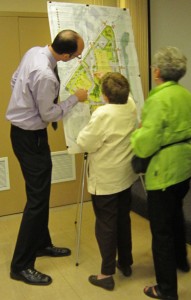 Interim Community Development Director Jamie Tellier has a lot of careful explaining to do in the years ahead. It was just a Receive and File Community Planning transmittal report – it was also a marker as to what the planning department was going to come to Council in the way of an ask when the budget is on the table.
Interim Community Planning Director Jamie Tellier told the Standing Committee that the department was a mess. He was asking Council to:
Approve the Future State organizational structure for Community Planning in principle as identified in the presentation contained in Appendix A. The Gazette reported on that presentation earlier this week.
In September 2019, Council approved a new organizational design for the executive level of the corporation that puts an emphasis on strategic management, risk assessment and public accountability, while also positioning the city to attract and retain employees in a growing and competitive marketplace.
 The north side of a very large complex development that is mired in an LPAT appeal and the problems created with the Interim Bylaw. The new structure will also enhance and highlight the City’s attention to City-wide customer service and public engagement through business process improvements, corporate-wide training and ongoing transformations such as digital service delivery.
As a natural progression of Phase I, city departments are now considering their organizational designs.
The Staff report sets out the problem in pretty stark language. “The current state of Community Planning organizational structure is out of balance and consists of several staff in contract roles as well as several vacancies. While we are actively recruiting to fill some vacant positions, this level of instability adds to workload pressures while creating challenges to retain talented staff. The current state of Community Planning requires unraveling into a more coherent framework.
“Community Planning must respond to the shift from greenfield policies and development to urban intensification and infill. Increased complexities in legislation, policy frameworks, and development applications are limiting the ability for Community Planning to meet service expectations with the organizational structure and staff resources currently in place.”
There are significant workload drivers from both the development and non-development portfolios of the department. The following are examples
Approximately 50 Active Major Development Files.
About 7000 residential units, 40 Tall/Mid-rise buildings, Employment, Commercial.
30 Major Development Pre-consultations to date.
11 Appeals for Major Developments to LPAT. 31 Appeals to ICBL.
Pre-building permit application volumes are up more than 50% from this time last year.
Adopted Official Plan, Comprehensive Zoning By-law Review, Housing Strategy, Region MCR, Core Commitment, Various Urban Design Guidelines and a Cultural Heritage Strategy.
This is all going to cost – expect it to be major – in the millions.
The city is facing expense pressures on several levels and revenue shortfalls on even more levels. Transit and Parks and Recreation have not produced that much revenue. COVID-19 has eaten into revenue and pushed the expense side up.
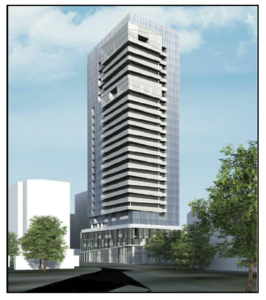 The ADI development in the downtown took up months of planning time. An OMB decision on this development made it possible for developers to propose projects that have already changed to look and feel of the downtown core.  The Molinaro development in the west end required far less staff time Phase II for Community Planning will have a financial impact on the corporation. Additional staff are required in addition to reconciling various contract positions into permanent roles.
Due to cost implications, the updated organizational structure of the department cannot occur at once – phasing will be required based on urgency and strategy. Four phases are proposed to implement the future state organizational structure of Community Planning and are outlined with approximate gross and net (tax supported) costs.
Parallel to Evolving the Organization – Phase II for Community Planning, a development application fee study is required to ensure fiscal sustainability of the department and that our fees are reflective of the effort in processing increasingly complex development applications. It is anticipated that the outcome of this study will offset some of the increased costs from the new organizational structure. The cost to undertake this study can be accommodated within the 2020 budget.
The transition from current state to future state of the Community Planning organizational structure over the next three years will result in an increased budget for human resources in particular.
The current state cost for Community Planning is approximately $3.4 Million ($1.0 Million Net Tax Supported).
Factoring in all contracts and above compliment staff, the actual costs for Community Planning is approximately $4.1 Million ($1.5 Million Net Tax Supported). This is an increase of approximately $0.7 Million ($0.5 Million Net Tax Supported) above current state.
 While just a proposed development at this point – this is a large project that will eat up months of planning staff at a time – these create the need for additional planning staff. The estimated future cost for Community Planning is approximately $5.9 Million ($2.2 Million Net Tax Supported). This is an increase of approximately $1.8 Million ($0.7 Million Net Tax Supported) above actual cost.
Reserve Funds are going to have to be used to address immediate needs.
Service fee adjustments and consideration of business cases through 2021 and 2022 budget process will determine how and when the other phases get done.
Related news story:
Planning human resource problems – the numbers.

|
|
 By Staff
By Staff


























 The results of the 2020 two day venture is as follows:
The results of the 2020 two day venture is as follows:



 Michele Bogle is a Burlington resident who writes for the Gazette on community issues. She has written several children’s books for ages 4-12, which can be found under the pseudonym, ‘Cameron S. Matthews’. Michele studied journalism from the University of Pennsylvania.
Michele Bogle is a Burlington resident who writes for the Gazette on community issues. She has written several children’s books for ages 4-12, which can be found under the pseudonym, ‘Cameron S. Matthews’. Michele studied journalism from the University of Pennsylvania.


 Written comments about the proposed location will be received by the AGCO until Thursday, Sept. 10, 2020 and may be submitted online at www.agco.ca/iAGCO. The AGCO will accept submissions from:
Written comments about the proposed location will be received by the AGCO until Thursday, Sept. 10, 2020 and may be submitted online at www.agco.ca/iAGCO. The AGCO will accept submissions from:












 Where secondary students eat their lunch, who they hang out with outside school property and whether a responsible daily self-assessment is being done isn’t reasonable for the school to manage, but the idea that it’ll all work out if precautions are taken within the classroom walls, and let parents worry about the rest, is simply a naive notion.
Where secondary students eat their lunch, who they hang out with outside school property and whether a responsible daily self-assessment is being done isn’t reasonable for the school to manage, but the idea that it’ll all work out if precautions are taken within the classroom walls, and let parents worry about the rest, is simply a naive notion. After the Board confirmed that they were going ahead with the ‘quadmester’ model in the secondary classes, Director Miller remarked that, “No model will satisfy everyone because feedback was very mixed. Parents prioritized different aspects of the options.” The Board agreed that this learning model met most public health requirements in protecting cohorts. For high school teacher Sandra Parker the quadmester is an agreeable option but has a concern shared by other teachers with regard to the timeline before the school start date of facilitating enough prepared lessons for the 180-minute virtual classes everyday in light of the fact none of the teachers currently know what they are teaching. There will be no handouts, no take home materials at all. All instruction will be virtual. An impossible task within a short period of time.
After the Board confirmed that they were going ahead with the ‘quadmester’ model in the secondary classes, Director Miller remarked that, “No model will satisfy everyone because feedback was very mixed. Parents prioritized different aspects of the options.” The Board agreed that this learning model met most public health requirements in protecting cohorts. For high school teacher Sandra Parker the quadmester is an agreeable option but has a concern shared by other teachers with regard to the timeline before the school start date of facilitating enough prepared lessons for the 180-minute virtual classes everyday in light of the fact none of the teachers currently know what they are teaching. There will be no handouts, no take home materials at all. All instruction will be virtual. An impossible task within a short period of time.




 Ray Rivers, born in Ontario earned an economics degree at the University of Western Ontario and a Master’s degree in economics at the University of Ottawa. His 25 year stint with the federal government included time with Environment, Fisheries and Oceans, Agriculture and the Post office. Rivers is active in his community; he formed the first
Ray Rivers, born in Ontario earned an economics degree at the University of Western Ontario and a Master’s degree in economics at the University of Ottawa. His 25 year stint with the federal government included time with Environment, Fisheries and Oceans, Agriculture and the Post office. Rivers is active in his community; he formed the first 





























